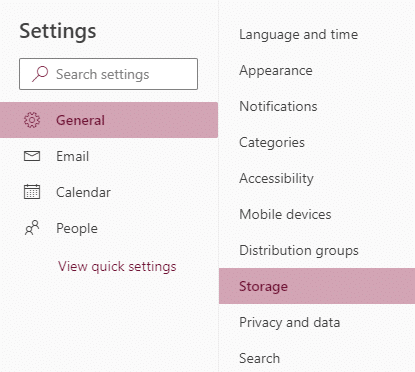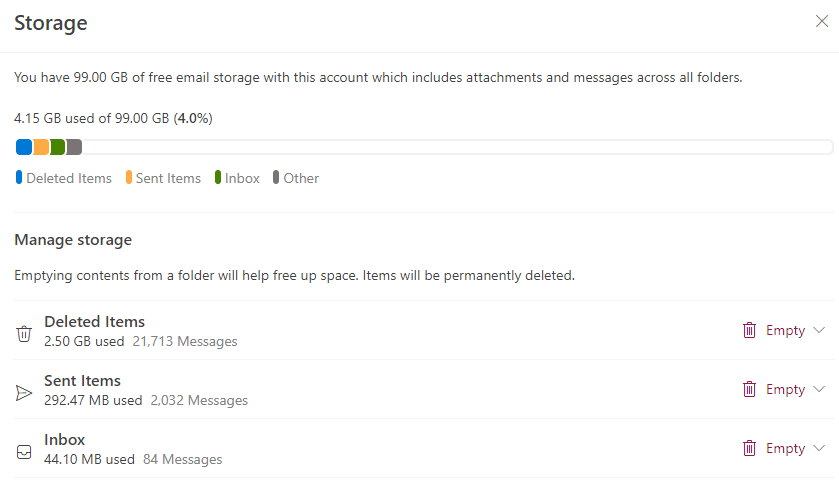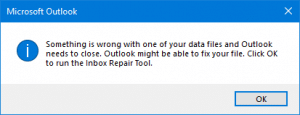Mailbox Management
Table of Contents
Email has given us a powerful medium to communicate across continents, or just to the other side of the room. With it comes a high volume of messages, many of which are “cakes in the kitchen” style and others that contain large attachments.
The problem of filing a large volume of paper correspondence has been replaced with the need to file and manage large volumes of email and attachments.

Here we look at the options for managing email and email archiving.
A standard mailbox in Microsoft 365, also known as Exchange Online Plan 1, will give you 50 GB of storage for emails but there are other licences that offer a greater mailbox capacity.
Whilst other licences also offer other functionality, mailbox capacity is pertinent to this guide.
If you’re using Outlook on the web click on the settings cog at the top right of the screen and navigate to General then Storage

Whilst mailbox capacity can be extended beyond 50 GB, for a cost, there is the potential to hit the hard limit of 100 GB, beyond which you cannot extend. This leads onto mailbox management and archiving.
The easiest way to deal with email is to carry out weekly or monthly housekeeping on your mailbox. Delete the dross, deal with the ones that need actioning. Have an Inbox that only contains outstanding emails.
The first thing you need to do is determine the current size of your mailbox the handy breakdown show how your mailbox storage is utilised and also gives a folder by folder analysis.

For internal emails you could consider switching communication to Microsoft Teams and have channels dedicated to the company and departments. Remember also you can email into a Teams channel so if you’re sending externally and want to copy internal groups you can CC the appropriate channel in Teams.
You may be familiar with archiving to PST files. These were historically the chosen method for clearing down a mailbox. A file on your computer where you could create folders and move archive mail to. These had a bad habit of becoming a general dumping ground, getting excessively large and then corrupting, resulting in the Inbox Repair Tool being brought into action!

They also had the drawback of being stored on your PCs internal hard disk so should this fail your email archives would also fail.
Beyond that are specific archiving systems, such as Mimecast, which automatically archives every email sent and received, with no action from you the end user. Emails are stored in the Mimecast cloud and can be accessed via an Outlook client plugin, webpage, or mobile client. Stored emails are encrypted and retained for 99 years. You can safely delete from Outlook knowing your email is retained in Mimecast. There are also Mimecast options to retain your Outlook folder structure in the archive, large file send and email filtering, which protects against spam and malicious attacks.
Email has revolutionised the way we communicate. A message sent by email can cross continents in the blink of an eye, allowing a fast and easy way to communicate both for business and for pleasure.
The problem is staying on top of your ever burgeoning Inbox and correspondence. The elements covered here will help you keep on track and maintain a tidy mailbox.

